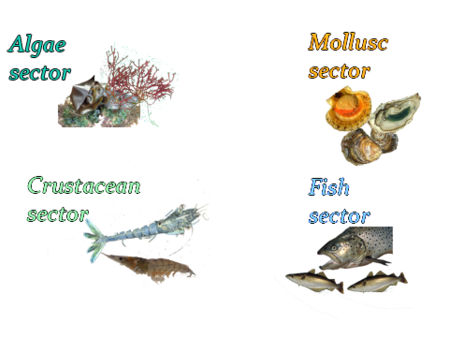Historic background
Definition
Definition of the word “Aquaculture” by the FAO:
Rearing of aquatic organisms (fish, molluscs, crustaceans, aquatic plants etc.) with the following two conditions :
- Human intervention in the process of increasing production: regular management, feeding, protection, etc.
- The stock being reared is someone’s legal property
Although the first condition is easy to understand, the idea of property is more complex. A fish farmer rearing trout will have bought the eggs or fry. This stock was therefore obtained by a financial transaction. The same is the case for a shellfish farmer who buys spat and puts it to grow on a leased area for which he or she pays rent. The situation is less clear when young salmon are released that will perhaps return in several years to breed. Who do they belong to? Are they the property of the producers who originally released them, or of the fishermen? The FAO made a decision for this case : these fish were aquacultural products, but became fishery products.
History
2000 B.C. | Rudimentary fish farming | Carp in China |
|---|---|---|
600 B.C. | Oysters placed in on-bottom growing areas (parcs) | Greece |
15th century A.D. | “Valliculture” | Italy |
18th century | Discovery of artificial fertilisation | |
19th century | Transplantation of salmonids | Europe |
1950 | Eel farming | Japan |
1960 | Massive increase in rainbow trout farming | Europe |
1970 | Sea ranching | |
1980 | “New aquaculture” with production of salmon, shrimp, seabass and seabream | |
1990 | Emergence of turbot, sturgeon and tropical species like grouper, barramundi and umbrine | |
2000 | Tuna capture and on-growing |
Ifremer / Yves Harache

